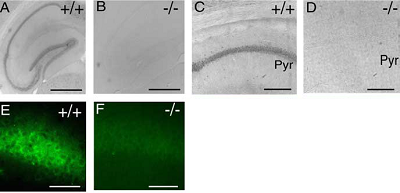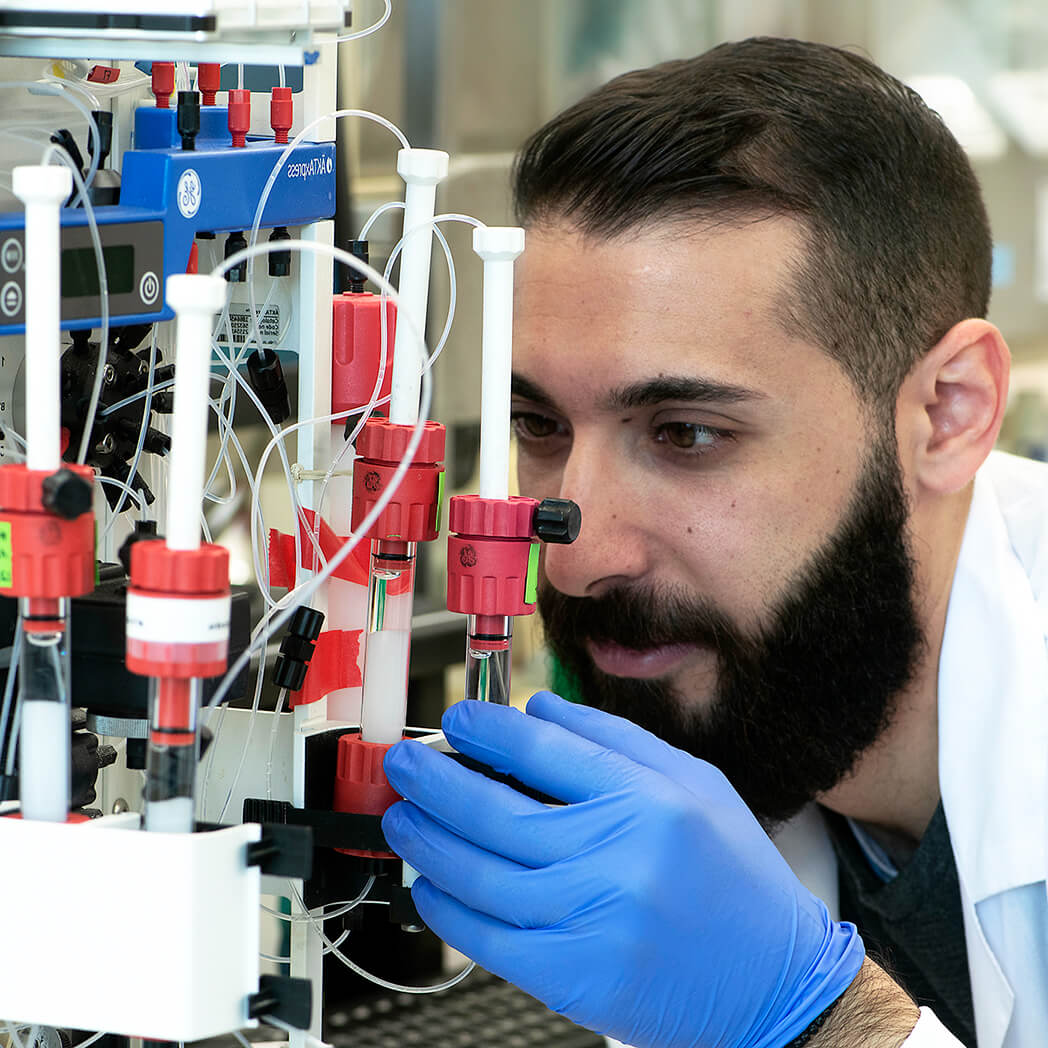Overview
- Peptide (C)KKYKYVEDYEQGLSGEMNQ, corresponding to amino acid residues 370-388 of rat P2X4 receptor (Accession P51577). Intracellular, C-terminus.
- Rat brain lysate (1:200-1:300).
 Western blot analysis of rat brain membranes:1. Anti-P2X4 Receptor Antibody (#APR-002), (1:200).
Western blot analysis of rat brain membranes:1. Anti-P2X4 Receptor Antibody (#APR-002), (1:200).
2. Anti-P2X4 Receptor Antibody, preincubated with P2X4 Receptor Blocking Peptide (#BLP-PR002).
- Rat hypothalamus lysate (Jo, Y.H. et al. (2011) J. Biol. Chem. 286, 19993.).
- Human mesangial cells (HMC) (1:200) (Solini, A. et al. (2007) Am. J. Physiol. 292, F1537.).
- NR8383 rat alveolar macrophage cell line (1:100) (Stokes, L. and Surprenant, A. (2009) Eur. J. Immunol. 39, 986.).
- The blocking peptide is not suitable for this application.
The P2X purinergic receptors belong to the ligand-gated ion channel family and are activated by extracellular ATP.
The structure and function of the P2X receptors, which were mainly investigated using in vitro models, indicate their involvement in synaptic communication, cell death, and differentiation.
Seven mammalian P2X receptor subtypes (P2X1–P2X7) have been identified and cloned.1,2,3 All P2X receptor subtypes share the same structure of intracellular N- and C-termini, two membrane-spanning domains and a large extracellular loop.
All P2X subunits can assemble to form homomeric or heteromeric functional channels with the exception of P2X6, which only appears to function as part of a heteromeric complex.4-9
The various P2X receptors show distinct expression patterns. P2X1-6 have been found in the central and peripheral nervous system, while the P2X7 receptor is predominantly found in cells of the immune system.4
The P2X2 receptor subunit has a widespread tissue distribution in autonomic neurons, but it is generally found to be co-expressed with one or more subtypes.
Overexpression of P2X4 was demonstrated in microglia and in the spinal dorsal horn following peripheral nerve injury. It has been suggested that activation of P2X4 along with p38 MAPK is essential for the development of allodynia (pain from a stimulus that doesn't normally elicit pain) following nerve injury. Inhibition of P2X4 expression in spinal microglia has been suggested as a novel therapeutic approach for the treatment of allodynia.10
Application key:
Species reactivity key:

Knockout validation of Anti-P2X4 Receptor antibody in mouse hippocampus.Immunohistochemical staining of mouse hippocampus sections using Anti-P2X4 Receptor Antibody (#APR-002). P2X4 staining is detected in sections from wild type mice (panels A, C, and E) but not in P2X4-/- mice (panels B, D, and F).Adapted from Sim, J.A. et al. (2006) J. Neurosci. 26, 9006. with permission of the Society for Neuroscience.
